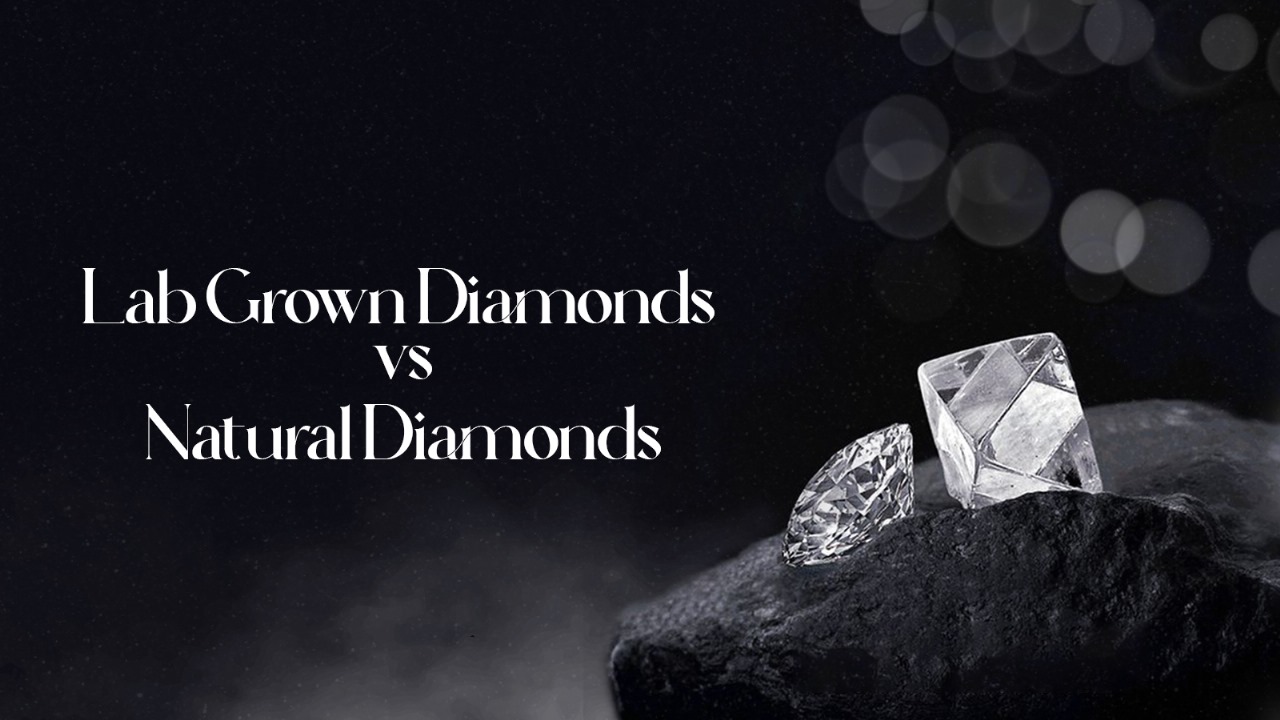The feeling of rescuing and saving is something far more profound. This shift in perspective applies to diamonds as well.
That emerald cut you desperately desire can either come at the cost of wasting hundreds of gallons of water, exploiting the earth, or subjecting people to harsh conditions, or it can simply be grown in a lab under precise technology. Which option would bring you more happiness? : Conscious Luxury or Cruel Luxury?
Well, the value of kindness often surpasses the luster of a diamond. For you, a diamond may be associated with celebratory memories of your fiancé’s proposal; for a child in Congo, it can represent forced labor and thus is known as a “blood diamond.”
In this blog, we’ll explore the real differences between lab-grown diamonds and natural diamonds beyond the suitability point of view. We’ll evaluate them from four angles: manufacturing process, purity, aesthetics, and cost. Let’s dive right in.
Ethical Manufacturing: Blood Diamond vs. Cruelty-Free Diamond
They say pressure creates diamonds, but in mining natural diamonds, the pressure is not just on the gems; it’s also on the labor, the earth, and the water. All of them go through a great extent of exploitation in the process of achieving that perfect shine; hence, these diamonds are called blood or conflict diamonds. They form under extreme heat and pressure, where carbon atoms crystallize, eventually resulting in diamonds. This transformation can take anywhere from 1 billion to 3 billion years to turn stone into a diamond.
In contrast, lab-grown diamonds are created using either of these two methods in a controlled laboratory setting using a pre-existing diamond seed. Therefore, they are considered a conscious luxury.
-
CVD Diamond Process
In the CVD (Chemical Vapor Deposition) process, a diamond seed is exposed to carbon and hydrogen gases in a heated chamber under 800°C as it changes into ions and separates into pure carbon. These pure carbon molecules then stick to the original diamond seed, which is later polished and returned to the chamber for further growth.
-
HPHT Diamond Process
In the HPHT (High Pressure, High Temperature) process, a small diamond seed is placed in pure carbon and given high pressure and temperature in a laboratory. They melt and become diamonds as a result.
Purity: Kohinoor vs. Lab-Grown Diamond
Did you know that only 2% of naturally mined diamonds are pure? For instance, the Kohinoor and diamonds from Golkonda fall into the category of high-purity diamonds certified as Type IIA. A prestigious licensing agency like the Gemological Institute of America (GIA) is in charge of certifying diamonds. Since Type IIA diamonds lack nitrogen or boron impurities, they are considered the most chemically pure diamonds.
Now, can lab-grown diamonds be certified as IIA by reputable organizations like GIA? Yes, lab-grown diamonds under the CVD process are Type IIA, indicating they consist of 100% pure carbon. However, certification can be acquired after a rigorous examination of diamonds based on their attributes.
Aesthetics: Which One Has the Eye-Catching Wow Factor?
Based on appearance, you won’t be able to distinguish lab-grown diamonds from mined diamonds. Lab-grown diamonds possess all the 4Cs and exude the same dazzling qualities as natural diamonds.
Even natural diamonds may have a hint of impurities in the form of nitrogen, whereas lab-grown diamonds are 100% carbon, thus 100% pure. Therefore, the only way to differentiate a lab-grown diamond from a natural diamond is with the help of a microscope.
Price Tag: Light on the Wallet vs. Costing a Fortune
By now, you may have understood that, despite having the same characteristics and even superior physical attributes, mined diamonds are worth a fortune. This is because only 1-2% of them qualify as pure diamonds; therefore, a sense of rarity in possession drives the cost factor. Additionally, since they are mined in one place (Africa) and polished in another (Europe and India), it ultimately reflects in the cost. Moreover, there is a steep decline in diamond mines and pure diamonds coming from them. So,considering all the factors, a lab-grown diamond will cost 30%-50% less than mined diamonds.
The Bottom Line
Choosing lab-grown diamonds over natural diamonds benefits you not only in terms of price and aesthetics but also in terms of ethical considerations. Ethically made diamonds are not only sustainable for natural resources like the earth and water but are also devoid of human suffering. So, the next time you wear your lab-grown diamond, it will carry the shine of kindness too.
If you are looking for an exquisite collection, from workwear to festive wear, from delicate earrings to gorgeous necklaces, Jewelbox has got you covered for all your sustainable diamond jewellery needs. Remember, we are easy on the wallet and the heart.




